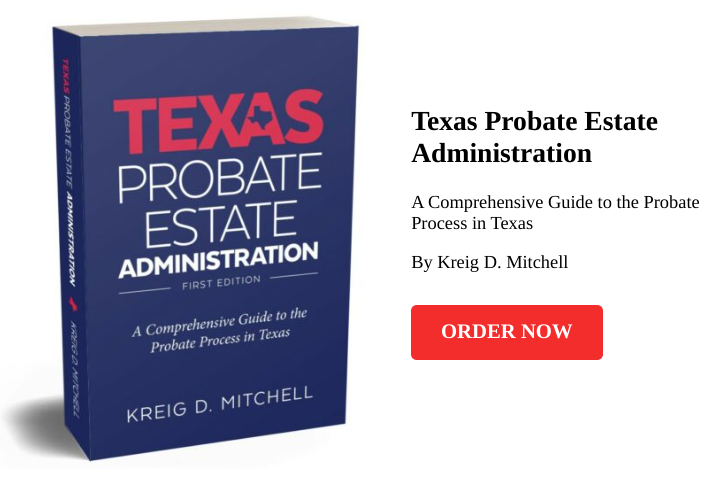Every year, thousands of Texas property owners execute transfer on death deeds with the best intentions. They sign the documents in front of notaries, have witnesses verify their signatures, and carefully store the deeds in safe places. These owners believe they’ve successfully arranged for their homes to pass directly to loved ones without the hassle and expense of probate. The deeds sit safely tucked away in filing cabinets, safe deposit boxes, or desk drawers—ready to be used when the time comes.
But there’s a fundamental problem with this approach. A transfer on death deed that never makes it into the county’s public records during the owner’s lifetime accomplishes nothing. No matter how perfectly executed, no matter how clear the owner’s intentions, an unrecorded deed cannot transfer property. The Texas Estates Code requires recording before death, not after. This timing requirement catches many families by surprise when they discover a parent’s carefully prepared deed sitting unfiled after the parent passes away.
What happens when beneficiaries find an executed but unrecorded transfer on death deed after the property owner dies? Can they still file it and claim the property? Or does the unrecorded deed become nothing more than evidence of what the deceased wanted but failed to accomplish? These questions arise regularly in Texas probate matters, and the answers can determine whether a family home passes smoothly to the next generation or gets tangled in probate administration.
Facts & Procedural History
Consider a typical situation. James Wilson owned a house in Travis County where he had lived for forty years. As part of his estate plan, after his wife died, James wanted to ensure his daughter, Sarah, would inherit the home without going through probate. He had heard that probate could take months and cost thousands of dollars in legal fees and court costs.
James contacted a probate attorney who explained that a transfer on death deed would allow the property to pass directly to Sarah upon his death. The attorney prepared the deed and scheduled a signing. On June 15, 2023, James came to the office and signed the deed in front of a notary. Two of the attorney’s staff members witnessed the signing. The deed clearly designated Sarah as the beneficiary who would receive the property when James died.
The attorney handed James the executed deed and explained that it needed to be filed with the Travis County Clerk’s office. James said he would take care of it. He left the office with the deed in hand, planning to stop by the county clerk’s office later that week. But James got busy with other matters and forgot about the filing. The deed ended up in a folder with other important papers in his home office.
Over the next year, James occasionally thought about the deed but kept putting off the trip to the courthouse. He figured there was no rush since he was only seventy-two and in reasonably good health. The deed was signed and notarized—surely the hard part was done. He could file it any time.
James died suddenly from a heart attack on August 3, 2024. Sarah went through her father’s papers and found the transfer on death deed. She was relieved to see that her father had arranged for her to inherit the house. She immediately took the deed to the Travis County Clerk’s office and had it recorded on August 8, 2024.
Sarah assumed everything was in order until her father’s son from a previous marriage, Michael, contacted her. Michael claimed that the deed was invalid because it had never been recorded during James’s lifetime. He argued that the house should pass through probate administration as part of James’s estate, where Michael would have rights as an heir under Texas law.
Sarah insisted that she had recorded the deed as soon as she found it. The deed clearly showed her father’s intent to leave her the property. She had done nothing wrong by filing it promptly after his death. But Michael pointed to the Texas Estates Code, which requires recording “before the transferor’s death.” The timing of the recording—five days after James died rather than any time during his life—appeared to doom the deed’s effectiveness.
The dispute raised a question that affects many Texas families: does a validly executed transfer on death deed accomplish anything if it sits unrecorded until after the property owner dies?
What Authority Does the Texas Estates Code Give for Transfer on Death Deeds?
The Texas Estates Code established transfer on death deeds as a probate-avoidance tool in 2015. Before that year, Texas law generally required real property to pass either through probate or through joint ownership arrangements. The legislature added Chapter 114 to give property owners another option for transferring real estate at death.
Section 114.051 of the Texas Estates Code provides the basic authorization. It states that an individual may transfer an interest in real property to one or more beneficiaries effective at the transferor’s death by using a transfer on death deed. This language makes clear that the transfer doesn’t happen when the deed is signed. The beneficiary gets nothing during the owner’s lifetime. Instead, the property passes automatically when death occurs.
This delayed-transfer mechanism distinguishes transfer on death deeds from regular deeds. When you execute a standard warranty deed or quitclaim deed, the transfer happens immediately upon delivery. The new owner takes title right away. But a transfer on death deed operates differently—it’s explicitly designed to preserve the original owner’s complete control until death.
The statute reinforces this point in Section 114.101, which explains that during the transferor’s lifetime, the deed doesn’t affect the owner’s rights in any way. The owner can still sell the property, mortgage it, or do anything else a property owner normally does. The designated beneficiary has no enforceable interest while the owner lives. Creditors of the beneficiary cannot reach the property. The transfer on death deed sits dormant, waiting for the triggering event of the owner’s death.
This framework serves important purposes. It allows elderly property owners to plan for property transfer without giving up control or ownership during their lives. Someone who executes a transfer on death deed continues to own the property completely and can change their mind at any time by revoking the deed and executing a new one.
What Formalities Must a Transfer on Death Deed Satisfy?
Section 114.055 of the Texas Estates Code sets out three requirements for an effective transfer on death deed. Understanding these requirements helps explain why recording timing matters so much.
First, the deed must contain the essential elements and formalities of a recordable deed. This means the document needs a proper legal description of the property, the owner’s signature, notarization, and other standard deed requirements. The statute doesn’t lower the bar for transfer on death deeds compared to other property conveyances. The deed must meet the same quality standards that apply to any deed that will be recorded in the county’s real property records.
Second, the deed must state that the transfer to the designated beneficiary occurs at the transferor’s death. This language requirement ensures clarity about the deed’s timing and purpose. Someone reading the deed should immediately understand that it’s not a current conveyance but rather a future transfer triggered by death. The deed cannot be ambiguous about whether it transfers property now or later.
Third—and this is where James Wilson’s deed failed—the deed must be recorded before the transferor’s death in the deed records in the county clerk’s office of the county where the property is located. The statute uses the word “must,” signaling that this is not a suggestion or a preference. Recording before death is mandatory for effectiveness.
These three requirements work together. The first ensures the deed meets basic property law standards. The second clarifies the deed’s purpose and timing. The third—the recording requirement—serves multiple functions that we need to examine more closely.
Why Does Texas Law Require Recording Before Death?
The recording requirement serves several important purposes in the statutory scheme. Understanding these purposes helps explain why Texas law draws such a firm line at the moment of death.
Recording provides public notice. Anyone interested in the property can search the county’s deed records and discover that a transfer on death deed exists. This notice protects potential buyers, lenders, and others who might otherwise deal with the property without knowing about the beneficiary’s future interest. Someone considering lending money secured by the property, for example, can see that the property will automatically transfer to a beneficiary upon the owner’s death.
The requirement also creates a clear evidentiary record. Questions sometimes arise after death about whether the deceased actually executed a transfer on death deed. Family members might claim a deed exists but cannot produce it. Or multiple people might present different versions of deeds with varying beneficiary designations. Recording during the owner’s lifetime prevents these disputes by establishing an official record that cannot be altered after death.
Recording during life also demonstrates the owner’s serious intent. Anyone can draft a document and stick it in a drawer. But taking the affirmative step to record the deed at the courthouse shows the owner moved beyond mere contemplation to actual implementation. The owner went through the trouble and expense of recording, suggesting genuine commitment to the transfer arrangement.
Perhaps most importantly, the before-death timing requirement prevents fraud and overreaching by would-be beneficiaries. Imagine if Texas law allowed beneficiaries to record transfer on death deeds after the owner died. Unscrupulous individuals could forge deeds, present questionable documents, or engage in other misconduct with less risk of being caught. The owner cannot object or confirm authenticity after death. Requiring recording before death means the owner is still around to challenge any improper filings.
What Does “Before the Transferor’s Death” Actually Mean?
The statutory language “before the transferor’s death” seems straightforward but raises practical questions about timing. When exactly must the deed be filed to satisfy this requirement?
The statute provides a clear temporal dividing line: the moment of death. Anything recorded while the owner is alive satisfies the requirement. Anything recorded after the owner dies fails the requirement. There’s no grace period, no allowance for “we didn’t know yet,” and no exception for filing within a few days after death.
This bright-line rule creates certainty. County clerks don’t need to make judgment calls about whether a filing came close enough to satisfying the deadline. Courts don’t need to develop equitable doctrines about substantial compliance. Either the deed was recorded before death or it wasn’t.
However, the rule also creates harsh results in some situations. Sarah Wilson recorded her father’s deed five days after he died. She acted as quickly as possible after discovering the deed and learning about her father’s death. She did nothing wrong or fraudulent. Yet the five-day delay—caused entirely by her father’s death intervening—appears to invalidate the deed.
The statute doesn’t provide any mechanism for late recording or equitable relief. Some statutes include language allowing courts to accept late filings upon a showing of good cause or excusable neglect. The Texas transfer on death deed statute contains no such provision. The recording requirement is absolute.
Can a Deed Be Recorded After Death and Still Be Effective?
The straightforward answer is no. The plain language of Section 114.055(3) requires recording “before the transferor’s death.” A deed recorded after death does not satisfy this statutory requirement.
This conclusion finds support in basic principles of statutory interpretation. When a statute uses clear, unambiguous language, courts apply that language as written. The word “before” has a well-understood meaning in English. Something that happens before an event occurs prior to that event in time. Something that happens after an event occurs subsequent to that event. There’s no overlap between “before” and “after.”
Texas courts generally enforce statutory requirements strictly in the probate context. The Texas Estates Code contains numerous timing requirements and procedural rules. Courts recognize that these rules promote certainty and finality in the administration of estates. Allowing parties to ignore statutory deadlines or requirements would undermine the orderly resolution of estate matters.
The recording requirement also differs from some other provisions where courts might find room for flexibility. Consider a statute that says someone “should” take certain action, or language stating that compliance is “preferred.” Such permissive language might allow courts to accept substantial compliance even if technical requirements aren’t perfectly met. But Section 114.055 says the deed “must” be recorded before death. This mandatory language leaves no room for deviation.
Some might argue that the statute should be read to require recording before the beneficiary claims the property or before probate proceedings begin, rather than before the literal moment of death. This interpretation would give effect to deeds recorded promptly after death but before any actual dispute arises. However, this reading contradicts the statute’s plain language. The legislature could have written “before probate” or “before any contest” but instead chose “before the transferor’s death.”
What Happens to Property Subject to an Unrecorded Deed?
When a property owner dies leaving behind an executed but unrecorded transfer on death deed, the property doesn’t pass under that deed. The deed fails to satisfy the statutory requirements for effectiveness. The property remains part of the deceased owner’s estate and must be handled through other legal mechanisms.
If the deceased had a will, the property passes according to the will’s terms. The will might leave everything to the same person named in the failed transfer on death deed, in which case the intended result occurs anyway through probate. Or the will might leave the property to different beneficiaries, overriding what the deceased attempted to accomplish with the unrecorded deed.
If the deceased died without a will—intestate, in legal terminology—the property passes according to Texas intestacy statutes. These statutes establish a priority order for distributing property to surviving family members. Spouses, children, parents, siblings, and other relatives may have claims depending on the family structure. The person named as beneficiary in the unrecorded deed might or might not be an intestate heir entitled to inherit.
In either scenario, the property must go through probate administration. Someone needs to open an estate, qualify as executor or administrator, marshal the estate’s assets, pay debts and taxes, and distribute property to the rightful beneficiaries. This is exactly what the deceased hoped to avoid by creating a transfer on death deed. The unrecorded deed defeats that purpose entirely.
Can Beneficiaries Challenge the Recording Requirement?
Beneficiaries who discover unrecorded transfer on death deeds sometimes attempt legal arguments to save the deeds despite the recording failure. These arguments generally prove unsuccessful given the statutory language, but they’re worth examining.
One argument suggests the recording requirement should be treated as procedural rather than substantive. Under this theory, the essential requirements for a valid transfer on death deed are execution and the statement of intent to transfer at death. Recording serves only to provide notice and create a public record. A beneficiary might argue that since the owner clearly intended the transfer and properly executed the deed, the recording failure shouldn’t void the entire arrangement.
This argument fails because the statute explicitly makes recording one of the three requirements for effectiveness. Section 114.055 doesn’t distinguish between substantive and procedural requirements. It simply lists three things the deed “must” do, and recording is one of them. Courts cannot rewrite statutes by declaring certain mandatory requirements to be merely optional.
Another argument invokes equity and the deceased’s intent. The beneficiary might present evidence showing the deceased clearly wanted them to have the property. Perhaps the deceased told multiple people about the transfer on death deed. Maybe the deceased sent the beneficiary a copy of the executed deed. The beneficiary argues that enforcing a technical recording requirement defeats the deceased’s obvious wishes and produces an inequitable result.
Texas courts resist these equitable arguments in the probate context. The Texas Estates Code establishes specific requirements for various types of transfers. Someone who wants to transfer property through a will must comply with will execution requirements. Someone who wants to create a trust must comply with trust requirements. Someone who wants to use a transfer on death deed must comply with transfer on death deed requirements. Good intentions don’t excuse noncompliance with statutory mandates.
A third argument suggests that recording after death should satisfy the requirement if no one suffered prejudice from the delay. If no creditors, buyers, or other interested parties relied on the property being unencumbered, the beneficiary argues, then the recording failure caused no actual harm. Courts should overlook technical violations that produce no real-world consequences.
This argument also fails. Statutes don’t typically require proof of prejudice as a condition of enforcement. The legislature determined that recording before death serves important purposes, and compliance is required whether or not someone can point to specific harm from noncompliance. The requirement exists to prevent potential problems, not just to remedy actual problems after they occur.
What Should Property Owners Do to Ensure Effective Recording?
Property owners who want to use transfer on death deeds need to treat recording as an integral part of the deed creation process, not as a separate task to handle later. The deed isn’t complete until it’s recorded. Executing the deed but leaving it unrecorded is like writing a check but never delivering it—the intended transfer doesn’t happen.
The safest approach involves recording the deed immediately after execution. On the same day the owner signs the deed in front of a notary, someone should take it to the county clerk’s office and have it recorded. This eliminates any gap between execution and recording. The owner doesn’t need to remember to file it later. There’s no risk of the deed getting lost or forgotten.
Many attorneys who prepare transfer on death deeds incorporate recording into their services. After the client signs the deed, the attorney’s office takes responsibility for filing it with the county clerk. The attorney obtains the recorded deed showing the filing date and stamp, then provides it to the client. This approach ensures recording happens promptly and correctly.
Property owners who prepare their own transfer on death deeds without attorney assistance need to understand that signing the deed is only half the job. The owner must then go to the county clerk’s office in the county where the property is located. The clerk will need the original executed deed. There will be a filing fee, typically based on the number of pages being recorded. The clerk will stamp the deed with a recording date and file number, then return a recorded copy.
Some owners worry about the cost of recording. Filing fees vary by county but generally amount to less than $50 for a typical transfer on death deed. This modest cost pales in comparison to the probate expenses the deed is designed to avoid. Saving a small filing fee makes no sense if it means the deed fails entirely and the property must go through probate anyway.
Can Property Owners Fix Recording Failures Before Death?
What about property owners who discover their transfer on death deeds were never recorded? Suppose someone executed a deed years ago, assumed their attorney had filed it, but later learned it was never recorded. Can the owner fix this problem?
The answer is yes, as long as the owner is still alive. The owner can simply take the executed deed to the county clerk’s office and have it recorded. The recording will be late in the sense that it should have been done when the deed was first executed. But “late” doesn’t matter under the statute. The requirement is recording “before the transferor’s death,” not recording within any specific time after execution. Recording five years after execution still satisfies the statutory requirement if the owner remains alive when the recording occurs.
This solution works only if the owner discovers the problem during their lifetime. Once the owner dies, the window for recording closes immediately and permanently. No one can record the deed on the deceased owner’s behalf after death and satisfy the statutory requirement.
Property owners should periodically verify that their transfer on death deeds remain on file with the county clerk. County records are public, and anyone can search them. An owner can contact the county clerk’s office or check online records to confirm their deed appears in the property records. If the deed isn’t found, the owner needs to locate their copy and get it recorded right away.
Some owners may need to execute a new deed rather than recording the old one. If the original deed has been lost, or if the owner wants to change the designated beneficiary, executing a fresh deed makes sense. The new deed should be recorded immediately after execution. If an old deed exists, the owner should also record a revocation of that deed to eliminate any possible confusion about which deed controls.
The Takeaway
Texas transfer on death deeds offer property owners a valuable tool for avoiding probate, but only when properly recorded during the owner’s lifetime. The Texas Estates Code’s requirement that deeds be recorded “before the transferor’s death” creates a firm deadline that cannot be extended or excused. No matter how perfectly executed a deed might be, no matter how clear the owner’s intentions, an unrecorded deed accomplishes nothing when the owner dies before it gets filed.
This recording requirement serves important purposes in protecting public records and preventing fraud, but it also creates harsh results for families who discover unrecorded deeds after a loved one’s death. Beneficiaries cannot cure the recording failure by filing the deed promptly after death. The property must pass through probate despite the deceased owner’s attempt to avoid that outcome. Property owners who want their transfer on death deeds to work must treat recording as an essential part of the deed creation process, not as an optional follow-up step. Execute the deed and record it the same day, or at least ensure recording happens while you’re still alive. Once death occurs, the opportunity to create an effective transfer on death deed vanishes permanently. James Wilson’s situation—a validly executed deed sitting unrecorded at death—represents a planning failure that no amount of good intentions can overcome after the fact.
Do you need help with a probate matter in Austin or the surrounding area? We are Austin probate attorneys. We help clients navigate the probate process. Call today for a free confidential consultation, 512-273-7444.
Our Austin Probate Attorneys provide a full range of probate services to our clients, including helping with probate administrations. Affordable rates, fixed fees, and payment plans are available. We provide step-by-step instructions, guidance, checklists, and more for completing the probate process. We have years of combined experience we can use to support and guide you with probate and estate matters. Call us today for a FREE attorney consultation.
Disclaimer
The content of this website is for informational purposes only and should not be construed as legal advice. The information presented may not apply to your situation and should not be acted upon without consulting a qualified probate attorney. We encourage you to seek the advice of a competent attorney with any legal questions you may have.




